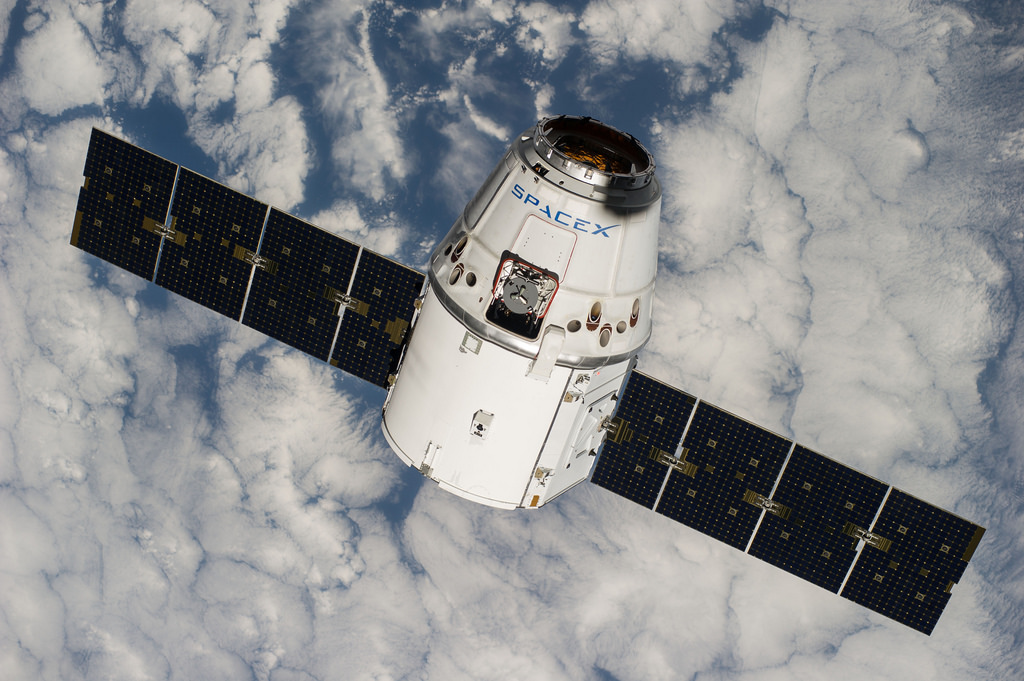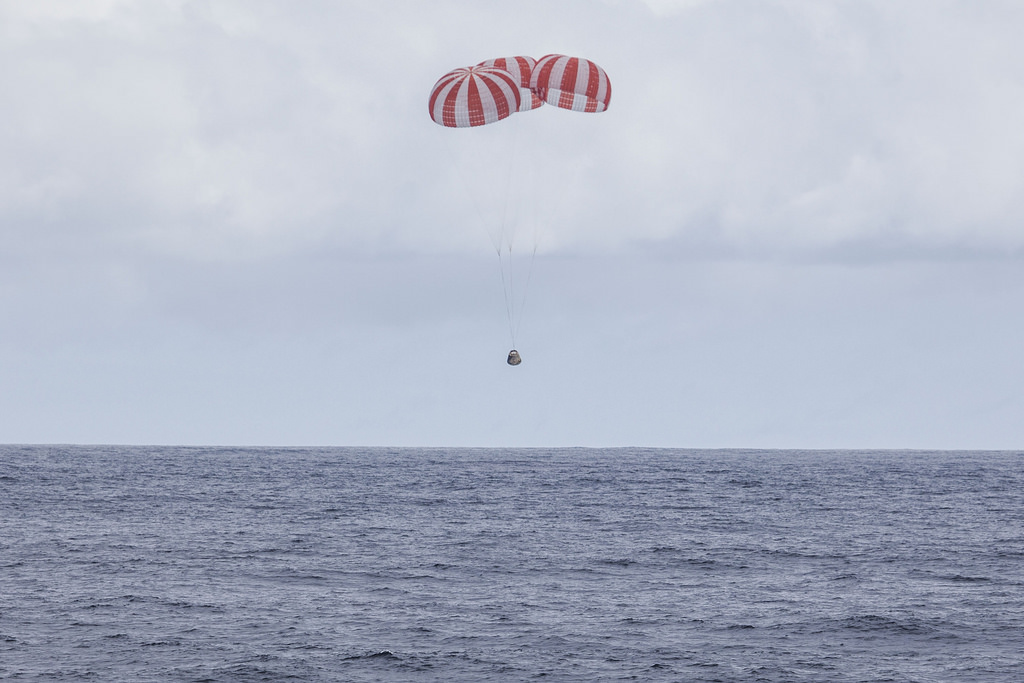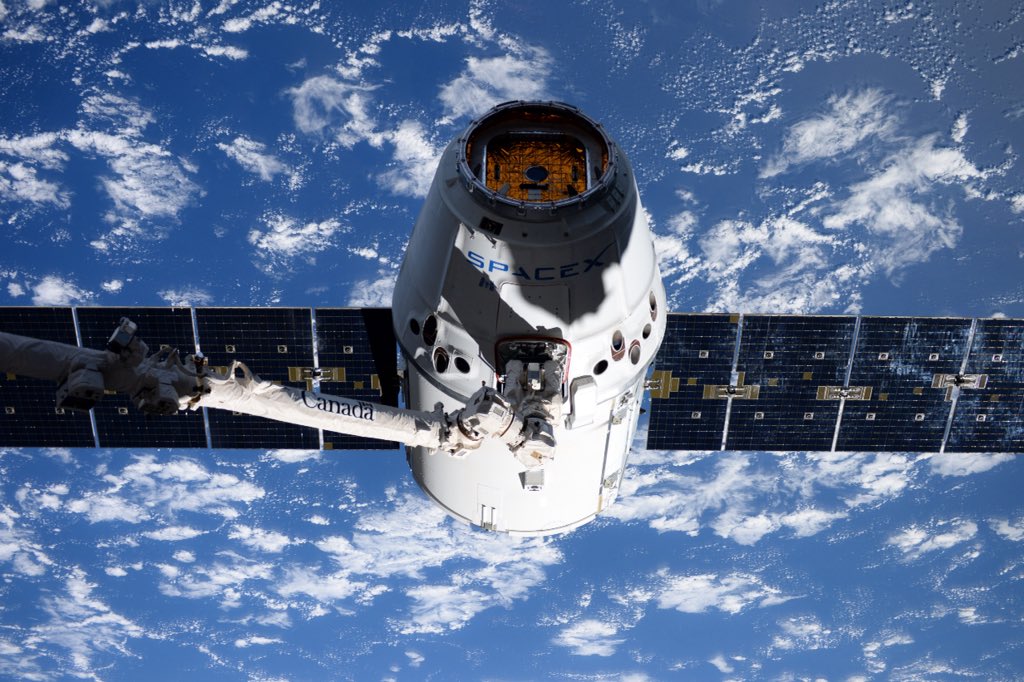
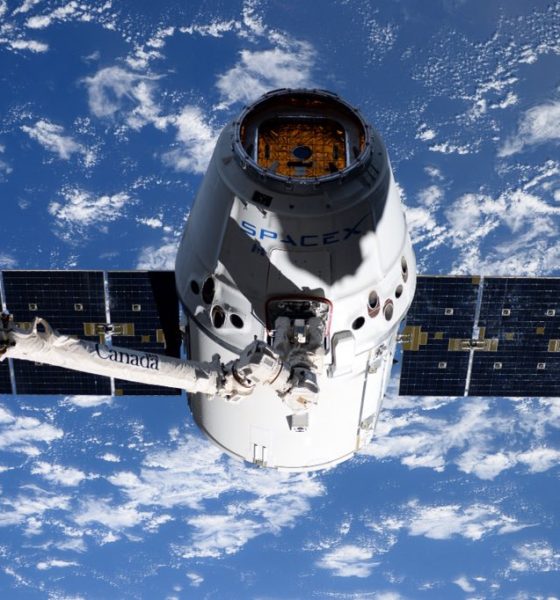
SpaceX
What SpaceX’s successful reuse of Dragon Spacecraft really means
Following Saturday’s auspicious launch and and first stage recovery, SpaceX’s Dragon spacecraft has successfully rendezvoused and docked with the International Space Station. Bringing with it more than 5,000 pounds of food, water, scientific experiments, and technology demonstrations, the company’s eleventh mission under their first Commercial Resupply Services contract is exceptional for a very unique and specific reason: the vehicle has flown before, bringing cargo to the ISS on SpaceX’s fourth CRS mission to the ISS. This accomplishment makes the Dragon currently docked at the ISS the only commercial spacecraft in human history to be launched into orbit more than once, continuing a tradition of auspicious firsts.
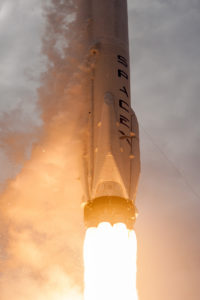
CRS-11 just after liftoff. Note the core designation “35” under the landing leg. (SpaceX)
Slightly more than two months after the first ever successful reuse of an orbital-class rocket, SpaceX now has two extraordinary demonstrations of success in favor of the company’s pursuit of democratizing affordable access to space. Reusability is and has been SpaceX’s method of pursuing that goal for at least a decade, with Musk publicly exhorting the potential benefits of rapid and complete reusability as early as 2007. It is almost a running joke within the community of aerospace and SpaceX fans that Musk will compare commercial airlines to orbital launch services at least once every time he is interviewed, but his point is and has long been clear. If all one has to do to run a transportation service is refuel after every trip, the price of a ticket or cargo transport drastically decreases. While many have slyly laughed or dismissed this goal in the past, often using the Space Shuttle as an example of the futility of reusability as a tool for cost reduction, it is quite hard to deny what SpaceX has accomplished so far.
The reuse of a Cargo Dragon is also arguably far more significant than it may initially appear. SpaceX has not provided any concrete information on the process of refurbishing the capsule, and it is entirely unclear if the “reuse” entailed much more than furnishing the CRS-4 pressure vessel and Draco thrusters with a new trunk, solar array, external shell. It is possible that, just like SES-10, the process of refurbishing a spacecraft for the first time resulted in little to no cost savings, and that this refurbishment took anywhere from several months to more than a year, with the CRS-4 capsule returning from orbit in late 2014. However, given the absolute rarity of reused capsule-type spacecraft, the data that engineers likely gathered throughout the process of refurbishing the Dragon would arguably make the whole process worthwhile even in the worst case scenarios described above. Hans Koenigsmann, Vice President of Mission Assurance at SpaceX, also noted in a press conference following CRS-11’s launch that the refurbishment of the capsule was somewhat uneventful, stating that the CRS-4 capsule had no unanticipated damage from the rigors of reentry and ocean landing and that SpaceX was already ready to consider using the capsule a third time. It’s likely that SpaceX will begin to rely more heavily on Cargo Dragon reuse as they refocus a majority of their manufacturing efforts on Dragon 2.
- The CRS-4 Dragon just before capture. (NASA)
- CRS-4 reentered in late 2014 and was recovered in the Pacific Ocean. (SpaceX)
SpaceX and Musk’s (in)famous ultimate ambitions are to make humanity a multiplanterary species, partly as a way to combat the extinction risks that an asteroid or comet strike pose, and partly because it is simply a staggering challenge that has the potential to make many humans “excited to wake up in the morning”. In order to make this happen, Musk saw that access to orbit was far too expensive for a colony on another planet to ever be sustainable, and that resuability was the only immediately obvious and accessible method through which the price to orbit could be decreased by several magnitudes. SpaceX is now almost routinely recovering Falcon 9 first stages when the mass of the payload allows it, and with a fifth and final version or “Block” of the vehicle optimized for rapid reuse set to debut later this year, Musk and others at the company have begun ruminating once more about the possibility of recovering and reusing the second stage of the Falcon 9. Benchmarked somewhere around 30% of the price of the vehicle, routine loss of the second stage effectively prevents the price of the Falcon 9 from dropping much below $20-30 million US dollars. While a nearly 50% or greater reduction in price would be an exceptional accomplishment, it is still far from from the multiple orders of magnitude reduction Musk hoped for when he set out to develop reusable rocketry.
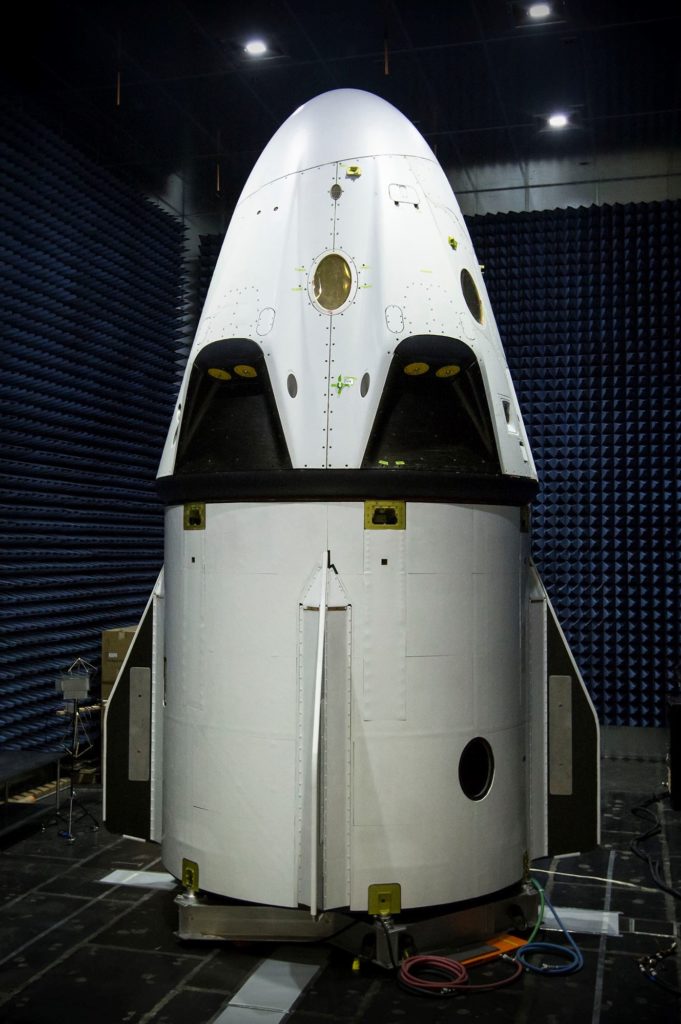
A prototype of Dragon 2 being tested in an anechoic chamber. (SpaceX)
This is where the reuse of Dragon pops its head up. With second stage recovery now being considered theoretically and Dragon 2 (Crew Dragon) preparing to begin regular launches in either Q4 2017 or Q1 2018, SpaceX has a good deal of experience to gain from learning how to safely and rapidly recover and reuse vehicles reentering the atmosphere at orbital velocity. Compared to recovering the first stage, this is another endeavor entirely. The fastest speed at which a recoverable first stage can ever realistically reenter the atmosphere is currently capped at around 5200 mph (2300 m/s), and is usually much closer to 3000 mph. An orbital capsule like Dragon, however, enters the atmosphere from Low Earth Orbit (LEO) at around five times that speed, typically close to 16,000 mph. In the context of recovering the second stage of Falcon 9, one must consider that most of SpaceX’s commercial manifest is made up of geostationary satellites, which require more energy to reach a higher orbit, and consequently would require the second stage to survive even higher reentry velocities in order to be recovered.
Returning from Mars, as SpaceX’s Interplanetary Transport System would have to, results in even higher reentry velocities of at least 25,000 mph for a reasonably quick journey. This is the most important detail in explaining the true value of simply reusing a Dragon capsule as SpaceX has just now done. By taking its first steps towards routinely reusing truly orbital spacecraft, SpaceX is advancing their knowledge reusability in practice and consequently taking concrete steps to prepare themselves for the difficult challenges that lie ahead in their pursuance of enabling sustainable colonization of Mars. Dragon 2 (Crew Dragon) promises to eventually rid the refurbishment process of the many headaches that salt water intrusion undoubtedly creates by returning via supersonic retropropulsion to a landing pad, much like Core 35 did this past Saturday.
Looking slightly further into the future, SpaceX has already announced plans to launch two unnamed private customers in a Dragon 2 on what would likely be a circumlunar free return trajectory, or around the Moon and back. The reentry velocity would be very similar to the velocity required to return to Earth from Mars, and certainly much faster than any reentry from geostationary orbits of Earth. If SpaceX manages to successfully and reliably recover and reuse orbital vehicles reentering at such high velocities, then the company will have made extraordinarily promising progress towards achieving their central goal of drastically lowering cost to orbit and thus enabling humanity to gain footholds on other planets.
So, take this Dragon reuse as you will. It may well be a major step along the way to colonizing Mars, or it may simply be an exciting practical implementation of SpaceX’s philosophy of reuse. Either way, this is a Dragon that is certainly worth celebrating.

News
SpaceX shades airline for seeking contract with Amazon’s Starlink rival

SpaceX employees, including its CEO Elon Musk, shaded American Airlines on social media this past weekend due to the company’s reported talks with Amazon’s Starlink rival, Leo.
Starlink has been adopted by several airlines, including United Airlines, Qatar Airways, Hawaiian Airlines, WestJet, Air France, airBaltic, and others. It has gained notoriety as an extremely solid, dependable, and reliable option for airline travel, as traditional options frequently cause users to lose connection to the internet.
Many airlines have made the switch, while others continue to mull the options available to them. American Airlines is one of them.
A report from Bloomberg indicates the airline is thinking of going with a Starlink rival owned by Amazon, called Leo. It was previously referred to as Project Kuiper.
American CEO Robert Isom said (via Bloomberg):
“While there’s Starlink, there are other low-Earth-orbit satellite opportunities that we can look at. We’re making sure that American is going to have what our customers need.”
Isom also said American has been in touch with Amazon about installing Leo on its aircraft, but he would not reveal the status of any discussions with the company.
The report caught the attention of Michael Nicolls, the Vice President of Starlink Engineering at SpaceX, who said:
“Only fly on airlines with good connectivity… and only one source of good connectivity at the moment…”
CEO Elon Musk replied to Nicolls by stating that American Airlines risks losing “a lot of customers if their connectivity solution fails.”
American Airlines will lose a lot of customers if their connectivity solution fails
— Elon Musk (@elonmusk) December 14, 2025
There are over 8,000 Starlink satellites in orbit currently, offering internet coverage in over 150 countries and territories globally. SpaceX expands its array of satellites nearly every week with launches from California and Florida, aiming to offer internet access to everyone across the globe.
Currently, the company is focusing on expanding into new markets, such as Africa and Asia.
News
Tesla hints at Starlink integration with recent patent
“By employing polymer blends, some examples enable RF transmission from all the modules to satellites and other communication devices both inside and outside the vehicle.”

Tesla hinted at a potential Starlink internet terminal integration within its vehicles in a recent patent, which describes a vehicle roof assembly with integrated radio frequency (RF) transparency.
The patent, which is Pub. No U.S. 2025/0368267 describes a new vehicle roof that is made of RF-transparent polymer materials, allowing and “facilitating clear communication with external devices and satellites.”
Tesla believes that a new vehicle roof design, comprised of different materials than the standard metallic or glass elements used in cars today, would allow the company to integrate modern vehicular technologies, “particularly those requiring radio frequency transmission and reception.
Tesla has recently filed a US patent application on integrating RF transparent materials into the roof structure.
“facilitating clear communication with external devices and satellites”
Tesla fleet is getting @Starlink connectivity integration soon. LFG @Tesla @elonmusk… pic.twitter.com/bLa8YtPLd1
— Chansoo Byeon (@Chansoo) December 9, 2025
Instead of glass or metallic materials, Tesla says vehicles may benefit from high-strength polymer blends, such as Polycarbonate, Acrylonitrile Butadiene Styrene, or Acrylonitrile Styrene Acrylate.
These materials still provide ideal strength metrics for crashworthiness, stiffness for noise, vibration, and harshness control, and are compliant with head impact regulations.
They would also enable better performance with modern technologies, like internet terminals, which need an uninterrupted signal to satellites for maximum reception. Tesla writes in the patent:
“By employing polymer blends, some examples enable RF transmission from all the modules to satellites and other communication devices both inside and outside the vehicle.”

One of the challenges Tesla seems to be aware of with this type of roof design is the fact that it will still have to enable safety and keep that at the forefront of the design. As you can see in the illustration above, Tesla plans to use four layers to increase safety and rigidity, while also combating noise and vibration.
It notes in the patent that disclosed examples still meet the safety requirements outlined in the Federal Motor Vehicle Safety Standards (FMVSS).
Starlink integrated directly into Tesla vehicles would be a considerable advantage for owners. It would come with a handful of distinct advantages.
Initially, the inclusion of Starlink would completely eliminate cellular dead zones, something that is an issue, especially in rural areas. Starlink would provide connectivity in these remote regions and would ensure uninterrupted service during road trips and off-grid adventures.
It could also be a critical addition for Robotaxi, as it is crucial to have solid and reliable connectivity for remote monitoring and fleet management.
Starlink’s growing constellation, thanks to SpaceX’s routine and frequent launch schedule, will provide secure, stable, and reliable internet connectivity for Tesla vehicles.
Although many owners have already mounted Starlink Mini dishes under their glass roofs for a similar experience, it may be integrated directly into Teslas in the coming years, either as an upgrade or a standard feature.
Investor's Corner
SpaceX IPO is coming, CEO Elon Musk confirms
However, it appears Musk is ready for SpaceX to go public, as Ars Technica Senior Space Editor Eric Berger wrote an op-ed that indicated he thought SpaceX would go public soon. Musk replied, basically confirming it.

Elon Musk confirmed through a post on X that a SpaceX initial public offering (IPO) is on the way after hinting at it several times earlier this year.
It also comes one day after Bloomberg reported that SpaceX was aiming for a valuation of $1.5 trillion, adding that it wanted to raise $30 billion.
Musk has been transparent for most of the year that he wanted to try to figure out a way to get Tesla shareholders to invest in SpaceX, giving them access to the stock.
He has also recognized the issues of having a public stock, like litigation exposure, quarterly reporting pressures, and other inconveniences.
However, it appears Musk is ready for SpaceX to go public, as Ars Technica Senior Space Editor Eric Berger wrote an op-ed that indicated he thought SpaceX would go public soon.
Musk replied, basically confirming it:
As usual, Eric is accurate
— Elon Musk (@elonmusk) December 10, 2025
Berger believes the IPO would help support the need for $30 billion or more in capital needed to fund AI integration projects, such as space-based data centers and lunar satellite factories. Musk confirmed recently that SpaceX “will be doing” data centers in orbit.
AI appears to be a “key part” of SpaceX getting to Musk, Berger also wrote. When writing about whether or not Optimus is a viable project and product for the company, he says that none of that matters. Musk thinks it is, and that’s all that matters.
It seems like Musk has certainly mulled something this big for a very long time, and the idea of taking SpaceX public is not just likely; it is necessary for the company to get to Mars.
The details of when SpaceX will finally hit that public status are not known. Many of the reports that came out over the past few days indicate it would happen in 2026, so sooner rather than later.
But there are a lot of things on Musk’s plate early next year, especially with Cybercab production, the potential launch of Unsupervised Full Self-Driving, and the Roadster unveiling, all planned for Q1.
